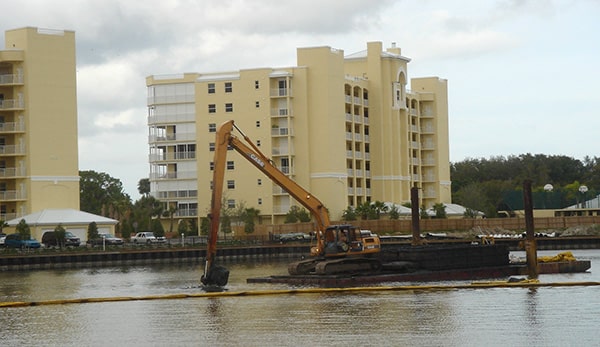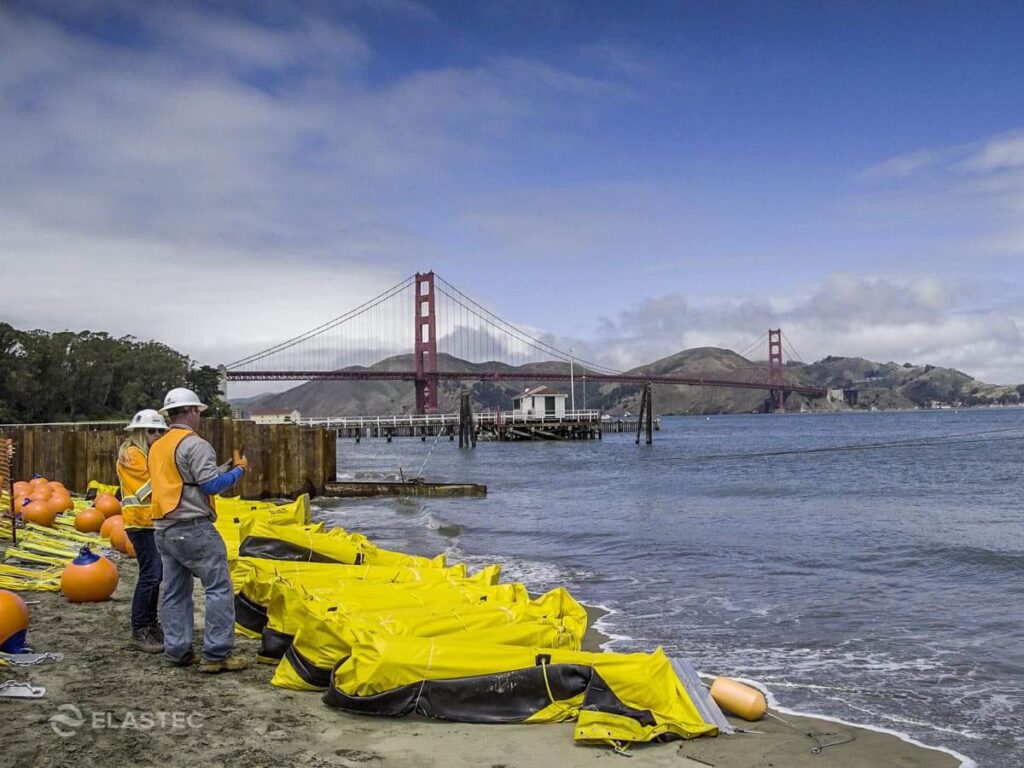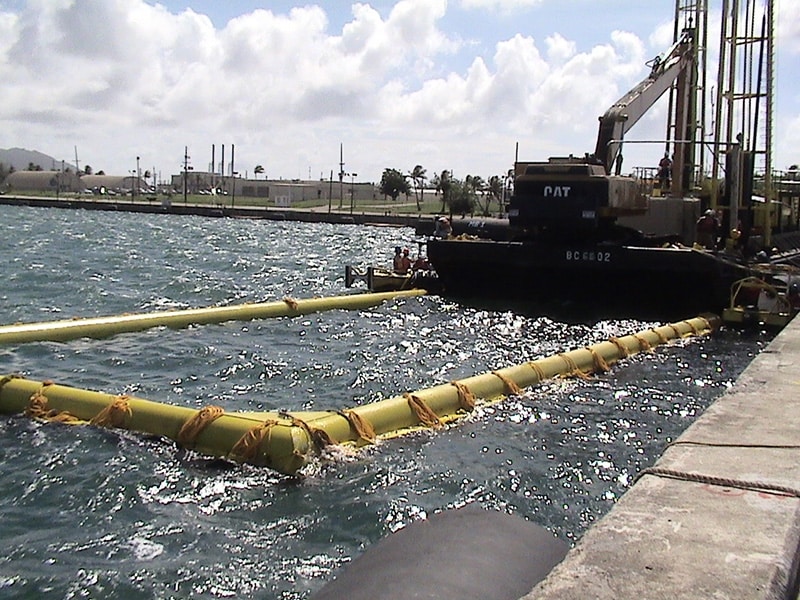Marine construction projects are vital for development and progress. They encompass a wide range of activities, from building ports and harbors to installing offshore wind farms and laying pipelines. However, these projects can disrupt the delicate underwater environment by stirring up sediment and creating turbidity. Here’s where silt curtains come in – acting as a vital shield to minimize the environmental impact of marine construction.

The Murky Threat: Sediment and Marine Life
Underwater construction activities like pile driving, dredging, and excavation inevitably disturb the seabed, releasing sediment into the water column. This fine-grained material creates turbidity, reducing water clarity. The consequences for marine life can be severe:
- Reduced Photosynthesis: Increased turbidity limits sunlight penetration, hindering the growth of aquatic plants, the base of the marine food chain.
- Disrupted Feeding: Fish and other organisms rely on clear water to locate food. Turbidity can make it difficult for them to find prey, affecting their growth and survival.
- Gill Clogging: Suspended sediment particles can clog fish gills, hindering their ability to breathe and extract oxygen from the water.
- Smothered Benthos: As the suspended particles settle, they can smother benthic communities – the diverse collection of animals living on the seabed – impacting their populations and overall ecosystem health.
The Solution: Deploying Silt Curtains
Silt curtains, also known as turbidity curtains, are floating barriers designed to control the spread of disturbed sediment during marine construction projects. They function similarly to their counterparts used in dredging:
- Fabric Panel: The core of the silt curtain is a woven geotextile fabric panel. This allows water to pass through while filtering out finer sediment particles.
- Flotation Element: An element along the top of the curtain keeps it upright at the water surface. Floats can be made from various materials like closed-cell foam or buoyant plastic.
- Ballast: A ballast (weight) along the bottom ensures the curtain reaches the seabed and creates a physical barrier between the construction area and the surrounding water body.
Strategic Deployment for Optimal Performance
The effectiveness of silt curtains hinges on proper deployment strategies. Here are some key considerations for marine construction projects:
- Location: Floating silt curtains are positioned to enclose the active construction zone. Factors like water currents, depth variations, and proximity to sensitive ecological areas are considered during placement.
- Depth and Length: The ideal depth and length of the silt curtain depend on project specifics. In shallow water, the curtain might extend from the surface to the seabed. In deeper water, it might reach a specific depth, and other mitigation measures might be employed. The length will vary based on the size of the construction area, with overlapping sections used to create a continuous barrier.
- Currents and Waves: Strong currents and waves can test the integrity of the silt curtain. Anchoring systems are used to secure the curtain in place and ensure it remains effective under these conditions.
Limitations and Considerations for Responsible Use
While silt curtains are a valuable tool, they have limitations:
- Imperfect Barrier: They might not be 100% effective in containing all sediment, especially under extreme currents or wave action.
- Regular Monitoring: Regular inspections and maintenance are crucial throughout the construction project. Tears or breaches need to be repaired promptly to maintain effectiveness.
Combining Strategies for Environmental Protection
To maximize environmental protection, silt curtains are often used in conjunction with other best practices during marine construction:
- Sediment Control Techniques: Practices like using specialized dredging equipment that minimizes sediment disturbance or deploying suction devices to capture sediment at the source can significantly reduce the amount of material released into the water column.
- Environmental Monitoring: Regular monitoring of water quality parameters like turbidity helps assess the effectiveness of mitigation measures and identify any potential issues early on.
Marine construction is a necessary endeavor, but it’s crucial to minimize its environmental impact. Silt curtains play a critical role in achieving this balance. By understanding their deployment strategies and limitations, and using them in combination with other mitigation measures, marine construction projects can move forward while protecting the health of our vital marine ecosystems.
Connect With Us
Sign up for our newsletters to receive the latest news and product information from Elastec.



